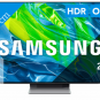LG Display took the opportunity to criticize Samsung's QD OLED screens during an online press call.
The call began with a brief discussion of LG Display's new '3rd-generation' OLED panels that feature micro lens array (MLA) technology, which enhances brightness. LG then shifted its focus to attacking Samsung's QD OLED screens for their vulnerability to screen burn, a problem Samsung has often cited as a disadvantage of LG's OLED TVs. This comes after Samsung launched its own OLED technology last year, which has given LG Display a chance to retaliate.
LG Display presented screen shots from a well-regarded technology review website, Rtings, on March 2, 2023, which displayed the results of long-term accelerated image retention tests that have been underway since November 16th of the previous year. The screen shots showed images from LG Electronics' 2022 G2 and C2 OLED TVs, which appeared to be free of any permanent image retention. However, two TVs that use Samsung Display's QD OLED technology, Samsung's S95B and Sony's A95K, showed signs of image burn-in. The issue was most apparent on Samsung's S95B. LG Display considers this independent third-party evidence of QD OLED's increased susceptibility to screen burn. In addition, LG Display provided an explanation of why its WOLED technology is less susceptible to screen burn than its rival's QD OLED system during the presentation. LG Display has claimed that its WOLED panels are less susceptible to screen burn compared to QD OLED's RGB subpixels due to the use of a white subpixel in their creation. This has been a point of criticism from Samsung towards LG Display over the years, arguing that it does not deliver a pure RGB picture. The stress on RGB subpixels in LG's WOLED panels is significantly less than that of QD OLED's RGB subpixels over time. Screen burn is caused by the 'fatiguing' of specific areas of RGB pixels through prolonged exposure to static image elements. Therefore, a pure RGB solution is expected to be more susceptible to screen burn than a WOLED one. LG Display made this point during an online presentation and then departed from the press call.
In recent years, Samsung has made significant technological advancements in heat management and OLED materials for their second-generation QD OLED TVs. These improvements have helped reduce screen burn and are similar to LG's advancements in screen burn management. Samsung also offers premium LCD TV ranges and argues that Rtings' burn-in tests are not representative of normal TV usage, and that all OLED TVs have countermeasures to minimize screen burn susceptibility. Despite this, LG's WOLED TVs have shown a clear difference in screen burn susceptibility compared to Samsung's QD OLED TVs in Rtings' latest test cycle. This ongoing competition between the two electronics giants suggests that their relationship is unlikely to improve anytime soon.
Samsung's QD OLED Screen More Susceptible to Screen Burn, Says LG Display

